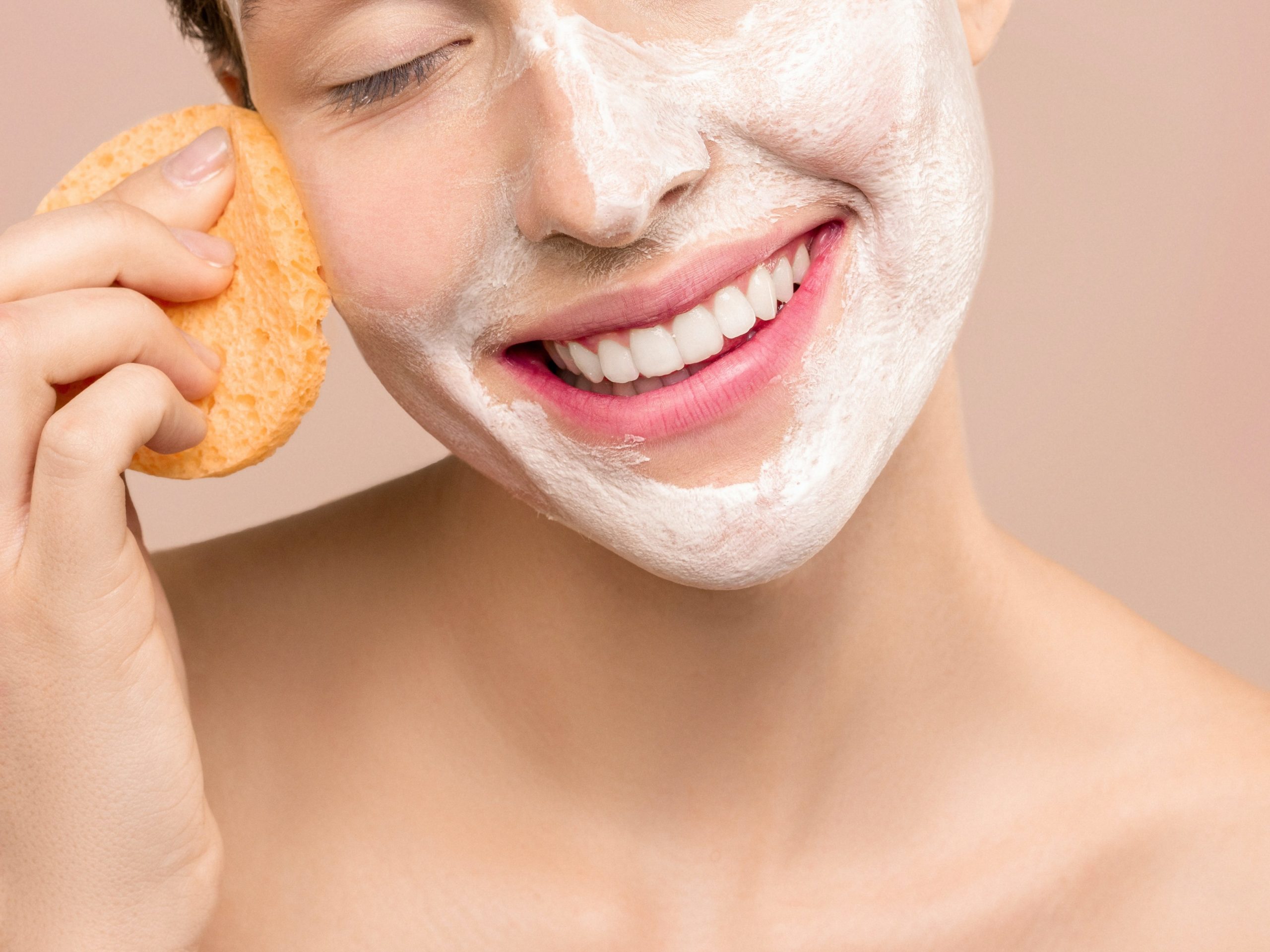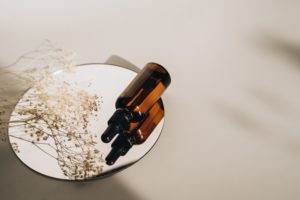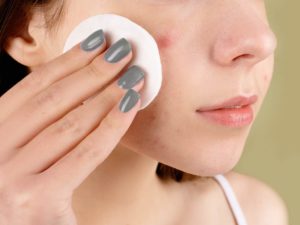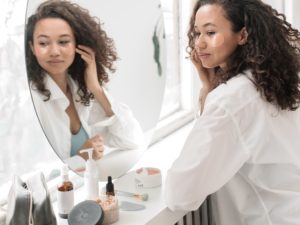7 Common Cleansing Mistakes That are Ruining Your Skin – and how to fix them
Cleansing is an important step in any skincare routine, but doing it wrong can do more harm than good.

Keep reading to find out what cleansing mistakes you’re probably doing and more importantly how to fix them!
What is Cleansing in Skincare
Cleansing your skin is, just like it sounds, the step in which you clean it.
It is incredibly important as cleansing removes makeup, dirt, environmental impurities, or other products like sunblock.
Why Does Cleansing Matter so Much?
Cleansing can either support or harm the skin. In the past, cleansers were harsh and damaged the skin (hence the need for a pH-restoring toner).
Nowadays, most cleansers are formulated to not change skin pH, decreasing the need for a toner and reducing the disruption of skin health.
Choosing the wrong one however can still have detrimental effects on the skin, leading to a damaged skin barrier.
How to Know Your Skin Barrier is Damaged
A damaged skin barrier can potentially lead to acne outbreaks, dark spots, wrinkles, and oversensitivity.
Signs of a damaged barrier can also include redness, peeling, flaking, dryness, tight and rough feeling skin, and itchiness.
Skin can even sting or burn when applying or touching your face.
Your skin can become so sensitive due to a bad cleanser that even water stings.
Yikes.
Keep reading to find out what not to do and how to fix any cleansing mistakes.
7 Common Cleansing Mistakes and How to Fix them
Here are the 7 most common mistakes someone makes in the cleansing step of a skincare routine. Find out what to do instead to fix the problem and support the health of your skin!
Using the Wrong Cleanser
The right Cleanser can do wonders for your skin. The wrong one can wreck it.
Some individuals need a cream cleanser to prevent dryness while others need a cleanser with oil control ingredients.
Even if a cleanser is washed off, the ingredients it has are vital.
What to do about it:
Test out other cleansers and find one that works for you.
Cream-based cleansers work well for dry, dehydrated skin.
Use a gel or foaming cleanser if you have acne or oily prone skin. Oily skin or acne-prone skin may also benefit from a salicylic acid Cleanser to help reduce breakouts (but don’t overdo this!)
Sensitive skin may benefit from using cream cleansers with helpful calming ingredients like niacinamide, oat, or chamomile extract.
Using a Cleanser with Unbalanced pH
While most cleansers are formulated to be balanced with the skin’s natural pH, not all of them are.
A cleanse that unbalances your pH may be used on purpose by someone with the right knowledge.
For example, some forms of vitamin c absorb better at low pH. Some individuals will choose a low pH cleanser to then apply vitamin C serum to the skin to maximize absorption.
But this is too intense for daily use for most people and maybe taxing on your skin.
A cleanser that is pH balanced eliminates the need for a toner that rebalances the skin.
What to do about it:
Make sure the outside packaging on your cleanser specifically states pH balanced.
Plus, make sure your cleansers are free from ingredients that disrupt the skin’s natural barrier like sodium lauryl sulfate or any kind of detergent or soap.
Over Exfoliating with Cleansers
Some cleansers can have exfoliating ingredients such as salicylic acid, AHA, or BHA.
This is great if you want to combine your cleansing stuff and exfoliating step in one but over-exfoliating can lead to damage to the skin’s natural barrier.
Even just rubbing the skin is a form of exfoliation, Therefore any additional exploration should be done carefully and in a controlled manner.
Plus, cleansers with exfoliating ingredients may dry out the skin, even for individuals with oil-prone skin.
What to do about it:
Switch to a cleanser that does not have any exfoliating ingredients, and make exfoliation its own step.
This will give you more control over the exfoliating step so it can be done safely.
Plus, switch to chemical exfoliates that are mild, such as lactic acid or salicylic acid before working your way up to any stronger exfoliate like AHA.
Trying to Remove Makeup with Cleanser
Most cleansers do not have the ability to remove waterproof makeup or waterproof sunscreen.
In this case, left-over products can begin to clog pores and ruin the skin.
What to do about it:
Try to start a double cleansing routine!
The first cleanse should be an oil or balm cleanser to break down the product, and the second step should be a regular cleanser to remove any gunk left by the first cleanse.
Using Too Many Actives Afterwards
With your skin, less is more.
While many ingredients can be used to effectively treat any skin concern, overloading your skin with too many may be harmful.
Over exfoliating can reduce moisture, retinol too much too soon can dry and make skin worse, and even too much hyaluronic acid can irritate!
What to do about it:
Stop using so much stuff. No really, sometimes simple is better. Your skin has what it needs to repair, we just need to support it.
Decrease retinol, vitamin C, or other irritating ingredients.
There is a fine line between supporting the skin and breaking it down.
Try to decongest and reset the skin every so often. Introduce new actives or products one at a time and slowly to allow the skin to become accustomed to them.
Plus, there are some active ingredients to never combine, full list here!
Not Moisturizing After a Cleanse
If nothing else, you should be moisturizing after cleansing.
Moisturizer will help soothe the skin after cleansing, restoring it to baseline hydration.
It can also help seal in water, provide hydration, and repair any damage from scrubbing and cleansing.
Some people, particularly oily prone pals, tend to think moisturizer is not good for them, but this is a myth.
Oil production may be the body trying to restore the skin barrier when it is over stripped or disrupted. A moisturizer is incredibly important to support skin barrier health.
It is pretty impossible to overdo it on a moisturizer.
What to do about:
Choose a moisturizer that works well with your skin.
Gel moisturizers or lotions seem to be lightweight and suitable for oil-prone skin while cream moisturizers tend to be heavier and better for dry skin.
Remember to look at ingredients and choose moisturizers with ones that support the skin, like ceramides.
Double Cleansing with Harsh Oils
I know, I know, I just said double cleanse us the way. But there are right and wrong ways to do it!
Double Cleansing is incredibly useful, especially if you want to feel cleaner, use makeup, or wear waterproof sunblock.
However, many cleaning oils are made to break down products but also strip the skin of all natural healthy oils.
This can lead to dry, tight feeling skin that feels tough and dehydrated.
What to do about it:
Some individuals do not even need to double cleanse. If you do not wear makeup and do not use a waterproof sunblock, chances are you do not need a double cleanse.
If you do need a double cleanse, but you think oil cleanses are too stripping, try to use micellar water instead!
Even some cleansing balms are milder than a cleansing oil.
Cleansing in the Morning
Some people cleanse twice a day, once in the morning, and once at night. In actuality, cleansing in the morning might be doing more harm than good.
While it’s true that morning cleanses can remove any pillowcase bacteria you got on your face, it may worsen the skin.
The skin, all night long, builds up the natural barrier to defend against the world. Washing it all off strips the skin of natural defense.
Remember, even oily prone skin may just be due to over cleansing with harsh cleansers and lack of moisture, and the skin trying to overcompensate.
What to do about it:
Change your pillowcase more often and try reducing the cleanse to once a day, at night.
In the morning if you feel it’s necessary, splash some water on the face or go in with a toner.
Additional Cleansing Tips
Here are some quick tips to truly get the best cleansing experience ever!
Never cleanse in the shower: this makes it hard to control cleanser amount, duration on the skin, and effectiveness.
Use lukewarm water: water should not be cold or hot when applied to the face.
Add retinol to your routine, right after cleansing: this will help increase the absorption and effectiveness of the product.
The Takeaway
The skin is the largest organ we have. It protects us so we should protect it in return.
And clean it well using a cleanser that works.
If you think you’re doing everything right in your skincare routine, but you’re still breaking out, the problem might lie with your cleanser.
Try different cleansers, reduce actives, and moisturize well.
Troubleshoot your skincare to find what works and what doesn’t.
Remember, skincare is a choice, not a chore, it’s a treat, not a punishment!





